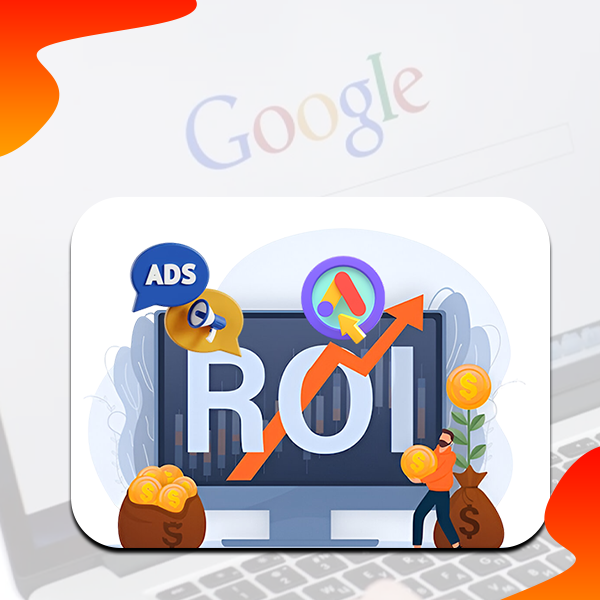How to Leverage Google Ads for Better ROI in 2025?

Google advertising is one of the most powerful digital marketing tools available, but the maximum return (ROI) requires a well-planned strategy. In 2025, businesses should embrace the latest trends, automation, and customization techniques to work their advertising expenses.
Advantage Of Google Advertisements To Run Better ROI in 2025.
1. Understanding the Google Advertising Ecosystem
Google Advertisement is a dynamic platform consisting of several advertising formats and networks:
- Search Advertisement: User should appear on top of Google search results based on questions.
- Performance Advertisement: Visual banner advertisement displayed on Google's partner websites.
- Shopping advertising: Product-based advertisements that appear in Google shopping results.
- Video Advertisement: Displayed on YouTube and partner sites.
Knowing what type of advertising suits your business goals is the first step to get a better ROI.
2. Optimize for AI and Machine Learning
The Google advertisement is rapidly powered by AI and machine learning algorithms. To stay competitive, businesses:
- Use smart bidding strategies such as target CPA (cost of Acquisition) and maximize conversions to optimize bids in real time.
- Performance maximum a campaign to distribute advertisements automatically in Google's entire inventory.
- Use responsible search advertisements (RSAs) to dynamically test several headlines and details for better CTR (click-through rate).
3. Keyword strategy for maximum ROI
A well-defined keyword strategy can make or break your Google advertisements success:
- Focus on long-tail keywords that have high intentions and less competition.
- Use negative keywords to filter irrelevant traffic and avoid wasting advertising expenses.
- Do regular keyword research using Google Keyword Planner and third-party tools to stay updated on trending searches.
4. Craft High-Converting Ad Copies
Your advertisement plays an important role in attracting per click and conversions:
- Write a compelling headline that includes your primary keyword and a price offer.
- Use emotional triggers and electric words such as "exclusive," limited time offering, "or" best deals ".
- A clear call-to-action (CTA) such as "buy now," "Get a free quotation," or "claim your discount today."
5. Landing page Optimization
Driving traffic is just half the fight; Your landing page must be optimized for conversion.
- Ensure a fast-loading, mobile-friendly design to reduce bounce rates.
- Keep the message stable between your advertising copy and landing page content.
- Include strong CTA, testimonials, and Trust Signal (eg, security badges, reviews, and guarantee).
- Apply an A/B test to experiment with different versions of your landing pages.
6. Audience Targeting & Segmentation
Google advertisement provides target options to advanced audiences that can greatly improve ROI:
- Use custom audiences to target users based on your search habits and interests.
- Remarks advertisements to retiring visitors who did not change in the beginning.
- Apply customer matches to show advertisements to users who have already interacted with your brand.
- Use Lookalike audiences to expand your access to potential customers with similar behaviour.
7. Monitor and optimize advertising performance
Regular performance tracking ensures that your campaigns are profitable:
- Use Google Analytics 4 (GA4) to track user behaviour and conversion track.
- Monitor major metrics such as CTR, quality score, conversion rate, and ROAS (return on advertising expenses).
- Conduct the Ad Testing by experimenting with various ad formats, creative and CTAS.
- Optimize the bid adjustment based on the device, location, time and the insight of the audience.
8. Automate your Google advertisements for efficiency
Automation is the future of Google advertisements. Businesses can do:
- Use the Google Advertising Script to automate repetitive functions such as bid adjustment and performance tracking.
- Apply automatic rules to stop underperforming advertisements and increase bids on high-performance people.
- Take advantage of the smart campaign for automated advertising placements and bids.
9. Budget allocation strategies
Smart budget allocation ensures maximum ROI:
- Invest in high-performing campaigns and stop low-performing people.
- Allocate more budget for remarketing campaigns, as visitors are more likely to change to return.
- Distribute the budget wisely between brand awareness campaigns and conversion-centred campaigns.
10. Stay Updated with Google’s Latest Features
Google continuously updates its advertising platform. To stay ahead in 2025:
- Follow the Google Advertising Blog and Industry News for new features.
- Participate in Google advertising training programs and certification courses.
- Test beta features such as new advertising formats, targeting options, and AI-operated insights.
Conclusion
In 2025, effectively availing Google advertisements requires a combination of AI-operated automation, audience targeting, keyword optimization, and continuous monitoring. By following the strategies mentioned above, businesses can maximize their ROI and stay ahead of the competition.
At Connect Infosoft, we specialize in Google Advertising Campaign Management to help businesses efficiently achieve their advertising goals. Contact us today to optimize your Google advertising strategy for better ROI in 2025!


